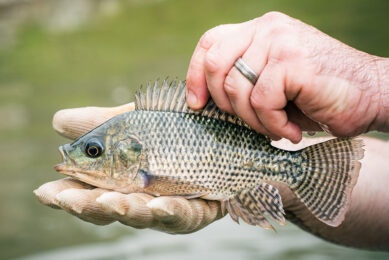Fish eating fish = not sustainable
We hear a lot about the boom in aquaculture. Some industry pundits are even asking how long can it last? The answer is simple: as long as the feed holds out. And that time may not be all that far away.
We hear a lot about the boom in aquaculture. Some industry pundits are even asking how long can it last? The answer is simple: as long as the feed holds out. And that time may not be all that far away.
The main problem is the fish we like to consume are the species that eat other fish for a living. The salmonid sector alone consumes more than half the fish oil produced. Shrimp are another huge consumer of fishmeal. Sea bass, barramundi, eels, catfish and grouper all require highly refined diets. As the farming of cod becomes wide spread the call on the finite fodder fish harvest will increase commensurate with that growth. The problem is that, as the world’s wild harvest plateaus out, so does global fishmeal production.
So far we ve seen the grain and legume industries offer their products as alternative sources of protein to fish farmers and despite the time and money poured into research and trials, little of any lasting value has come from it. The main outcome has been loss of production, loss of fish quality and increased nutrient loads in ponds. In many cases, financially and environmentally disastrous increases in nutrient loads.
The truth of the matter is that there is no alternative to fishmeal as an efficient protein source for aquaculture diets, and until such time as the global research community makes a concerted effort to determine the specific nutrient requirements of the individual species of commonly farmed fish, this situation will not change.
Nutrient retention in the body of the fish is dependent on the nutrients required being present in the food at the correct levels for maintenance and growth. Any nutrients surplus to this requirement is simply eliminated, thus increasing the resultant pollutant load in the environment in which the fish must breathe and live. Therefore, the first step in the process of reducing the global requirement for fish meal is to determine the exact nutrient requirements for growth and maintenance, followed by an investigation to determine or design suitable raw ingredients from which to manufacture suitably balanced diets.
It could well be that the answer lies not in finding an alternative protein source for fishmeal, but an alternative source of raw material from which to manufacture fishmeal. Could fish farmers of the future find themselves growing herbivorous species on cheaply sustainable diets of phytoplankton to feed carnivorous species to meet the demands of the high order predator species favoured by the global cuisine? Could the aquaculture industry cut out the middle fish altogether and grow zooplankton as a source of essential amino acids for aquaculture diets.
One thing is certain. If the aquaculture industry is to supply the ever rowing demand for seafood it is going to have to find some way of keeping the rations it feeds its charges at a cost efficient and sustainable level and to minimize metabolic waste from their production systems. While at the same time targeting the nutrient profile of the species being farmed to maximize production efficiency. It is the industry’s challenge for the 21st Century and its time starts now!











